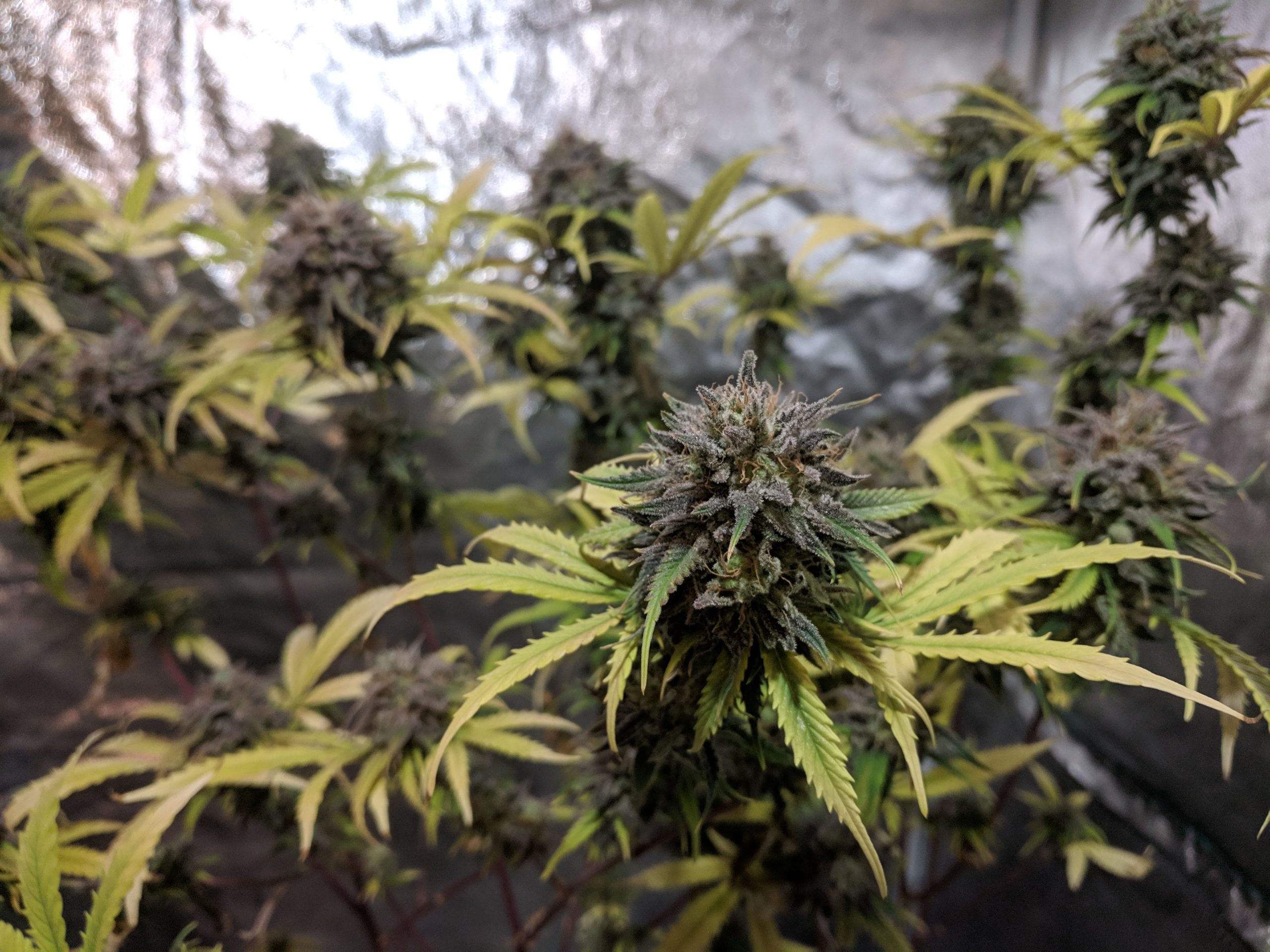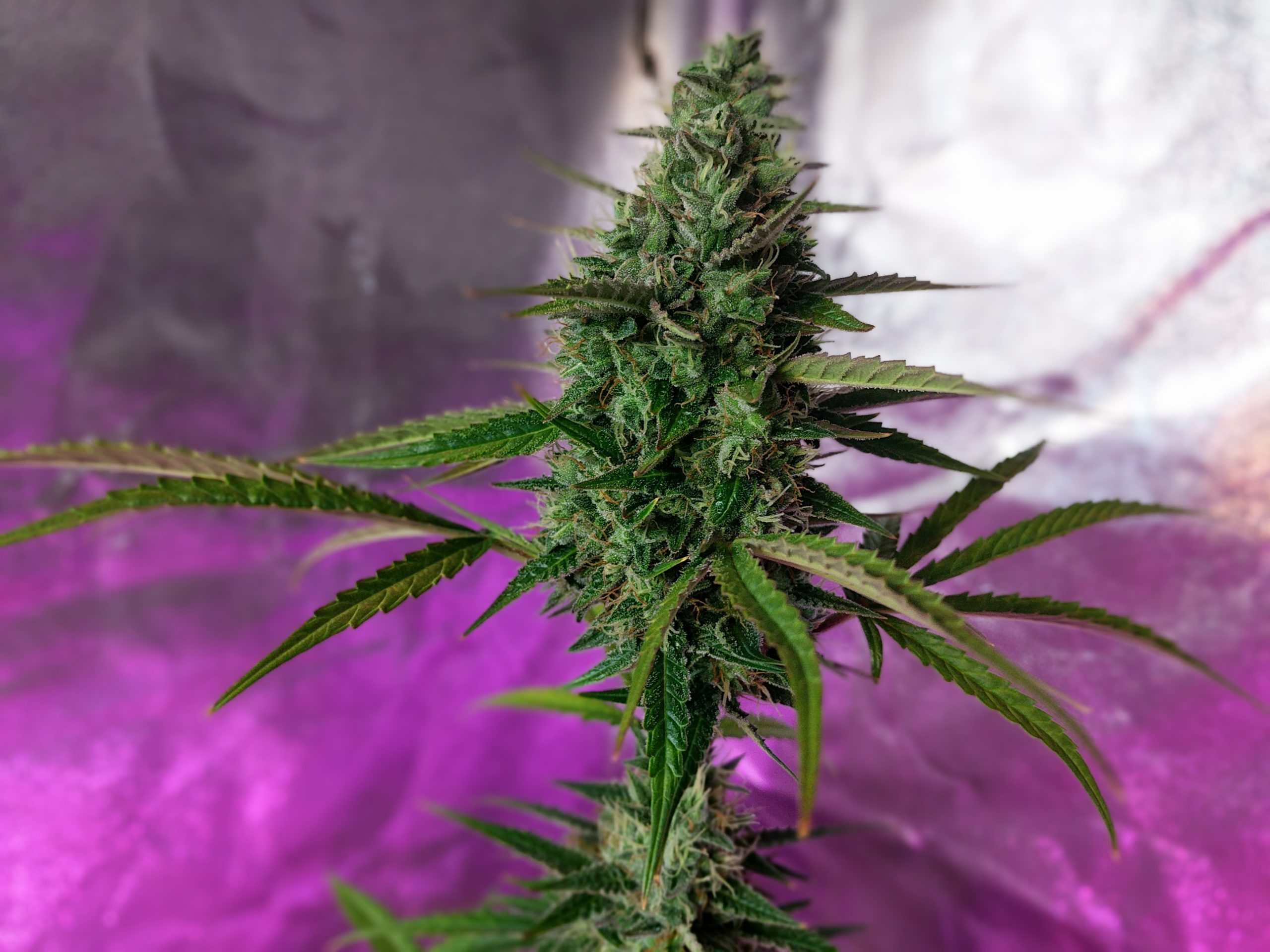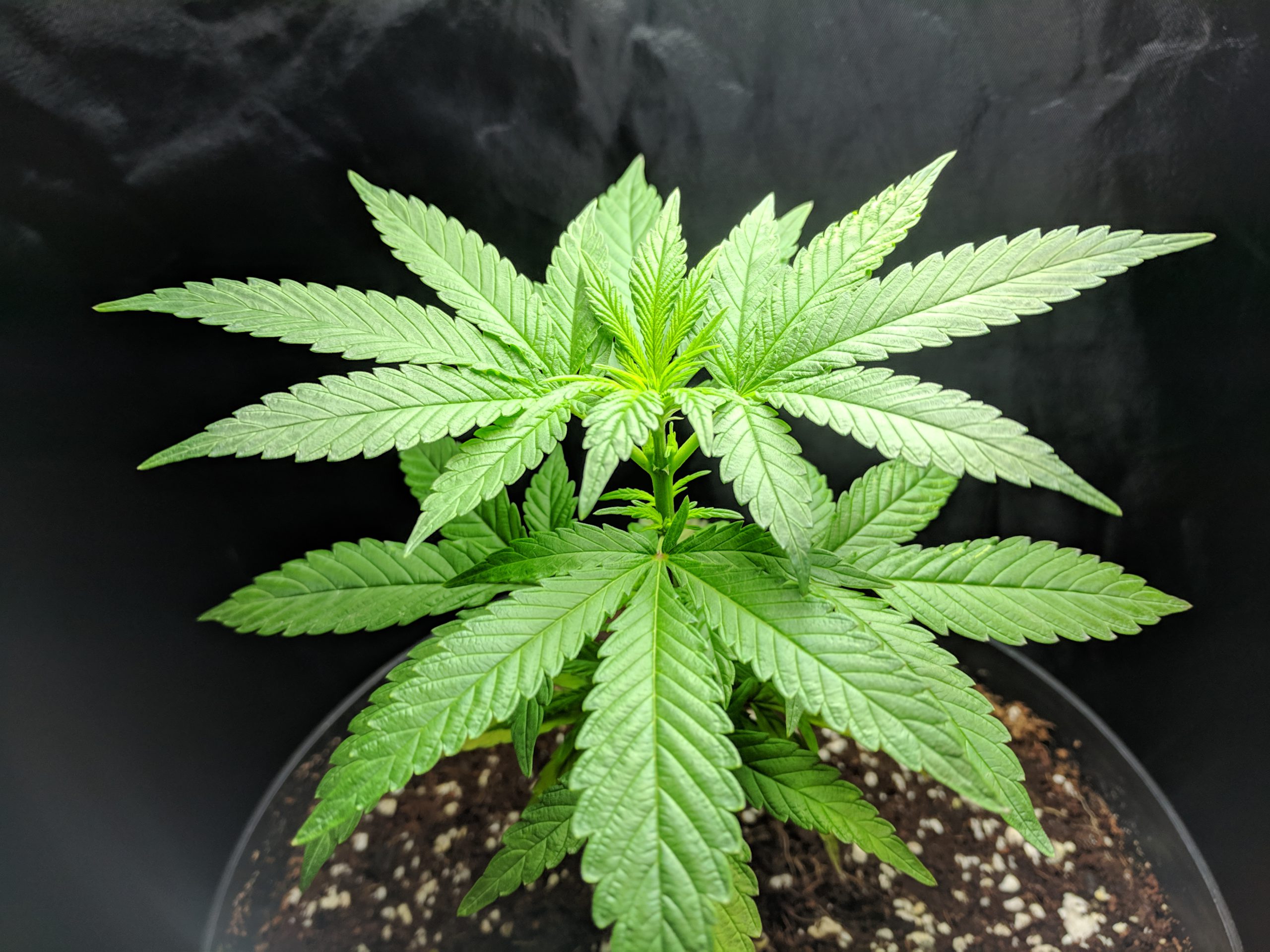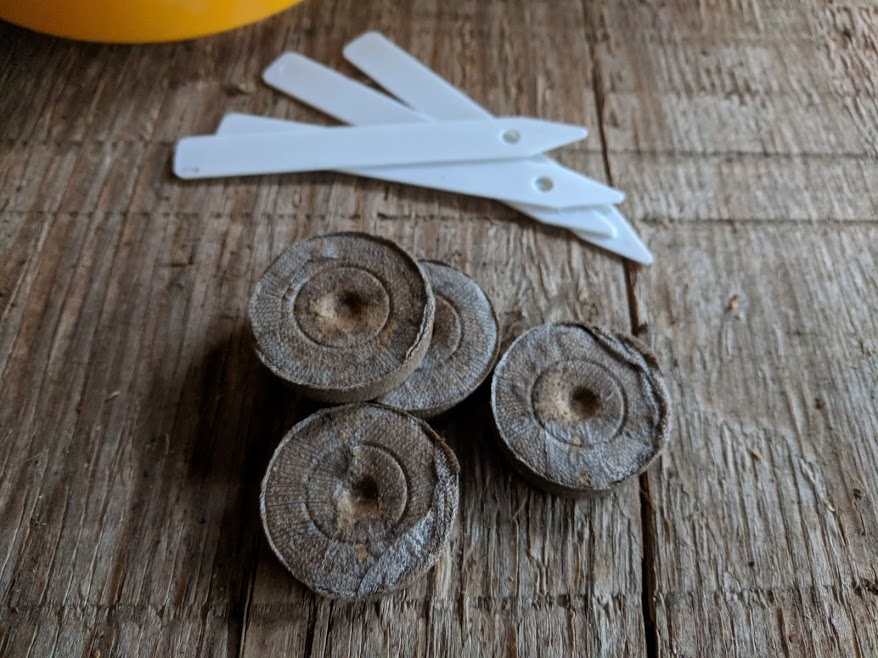In this chapter, we’ll cover caring for your cannabis seedlings. The seedling phase begins when the young plant first emerges from the seed and extends for the first few weeks of life. Seedlings are born with a pair of small round leaves called ‘embryonic cotyledons,’ that formed inside the seed. The young seedling uses these leaves to bootstrap photosynthesis and growth processes through the seedling phase, which ends after the plant starts growing adult leaves with 5 and 7 points.
Primary Objective: During the seedling phase, the primary objective is to allow the plant to develop hearty leaves for photosynthesis, healthy roots to slurp water and nutrients and a sturdy stem to support it all. It’s best to let the seedling do its job with minimum disturbance from the grower.
Optimal Environment: Think warm spring days in a humid understory, at the edge of a clearing. The light would be bright, but not too intense, and would shine between 12 and 16 hours a day. The soil would be mostly dry between rains, and temperatures would be between 70°F-80°F (21°C-26°C) with 60-80% humidity. In this environment, the young plant would spend the first weeks of her life developing its first sets of true leaves. The first sets will have one point, the second will have 3 points, the next 5 points, before finally producing the iconic 7-point leaf. Under the soil, the roots will begin spreading throughout the medium, looking to establish a solid base in the thick understory.

How do I care for a seedling?
Lights
Provide ample light, but not too bright, for over 12 hours per day. Compact fluorescent light, low powered LED, or a window sill would all be ideal sources. There are indications that continuous light, without periods of darkness, can harm the vascular systems of young cannabis plants, so we recommend between 16 and 18 hours of light per day for seedlings.
Temperature/Humidity
With seedlings, we are trying to replicate warm spring conditions. Ideal temperatures are between 70°F and 80°F, and should never drop below 60°F. Seedlings benefit from higher air humidities while the root structures are forming, between 60% and 70% being ideal.
Water/Nutrients
Water should be pH balanced between 5.5 and 6.5. Watering seedlings are simple if you follow these two basic rules:
DO keep the soil warm and moist throughout the seedling phase.
DO NOT flood or saturate the soil, since this will prevent the roots from getting enough oxygen. Too much water and the seedling will ‘damp out’ and will fail.
Young pot seedlings do not need very many nutrients and nutritional content in the growing medium that is high will ‘burn’ their young leaves. Peat plugs have almost no nutrient content, making them ideal mediums for young seedlings. After the first few weeks, you may begin to notice lower leaves yellowing slightly; this is the plant asking for nitrogen. Start off with a light compost tea, or diluted nutrients at ~25% of the recommended dose; then ramp up over the coming weeks. Remember though, if the leaf tips begin to burn that this is a sign that nutrient levels are too high, and to back off a little. Tolerance – or need – for nutrients varies by strains, and even by the individual plant, so you’ll need to use trial and error to find the happy medium.
Pest Control
Seedlings are fairly tender, so avoid using even neem oil on them – never mind strong chemical treatments. For the first weeks, pests should not be a major problem for your seedlings if you follow a few preventative measures that can help you keep your seedlings safe:
- Always start your seedlings in a clean, pest-free environment
- Keep it clean; don’t leave litter, rotting leaves or standing water in your grow space since this provides pests with hiding spots and food sources.
- Don’t spray the plants right before lights out; water droplets left on the leaves can encourage mold and mildew.
- Keep proper temperature and humidity; too warm and humid and pests will thrive.
You can learn more about a balanced approach to handling pests here. If you do have pests in your seedlings, remove them from the infected area and try a light neem treatment. Learn more about using neem oil to safely treat cannabis.

Transplanting
It is best practice to keep plants in a suitably sized container for its current stage. If the container is too big, the plant can’t drink up all the water and will tend to damp out from oxygen deprivation. If the container is too small, the plant can become root bound and stop growing. Start off with small containers for small plants, and transplant up as the plants’ root system fills the container.
Training/Pruning
Young seedlings are tender and under rapid development and shouldn’t be trained or pruned. Droopy seedlings can be propped up with a stake, but otherwise the seedling should be left to grow.
When Is The Seedling Phase Done?
There isn’t a definitive moment: once plants start producing the seven-pointed leaves that we associate with adult cannabis, vegetation will begin.

The plants in the picture above have matured and strengthened, and are beginning to produce five- and seven-point leaves. So far they’ve spent their lives under a soft fluorescent light, with only water and a light compost tea. Now they’re ready to be transplanted to larger containers and are showing early signs of nutrient deficiencies, seen in the yellowing leaves at the base of the plant. All of these signs taken together signal the end of the seedling phase, and the beginning of the adult vegetative stage.
Why is my young seedling drooping?
Most often, a drooping seedling is caused by overwatering, known as ‘damping out.’ Let the medium dry out before watering again, and the young seedling might recover.
How can I get the seedling to grow straight?
Even healthy seedlings often droop or grow crooked. You can quickly correct leaning or drooping plants without stressing the plant by staking it up. Take a small wooden or plastic stake and push it into the soil deep enough to stay upright. Attach gardening wire to the stake and tie the plant upright by enclosing it in a loose loop. This low-stress training method will encourage the young plant to grow upright without harming or damaging it.

Why are my seedlings turning yellow?
The plant isn’t getting enough nutrients. Deficiencies often due to a pH imbalance locking out available nutrients or it could be a lack of available nutrients. Check pH first, but if you plant in with entirely inert mediums, like coco and perlite, add gentle nutrients after the first week.





